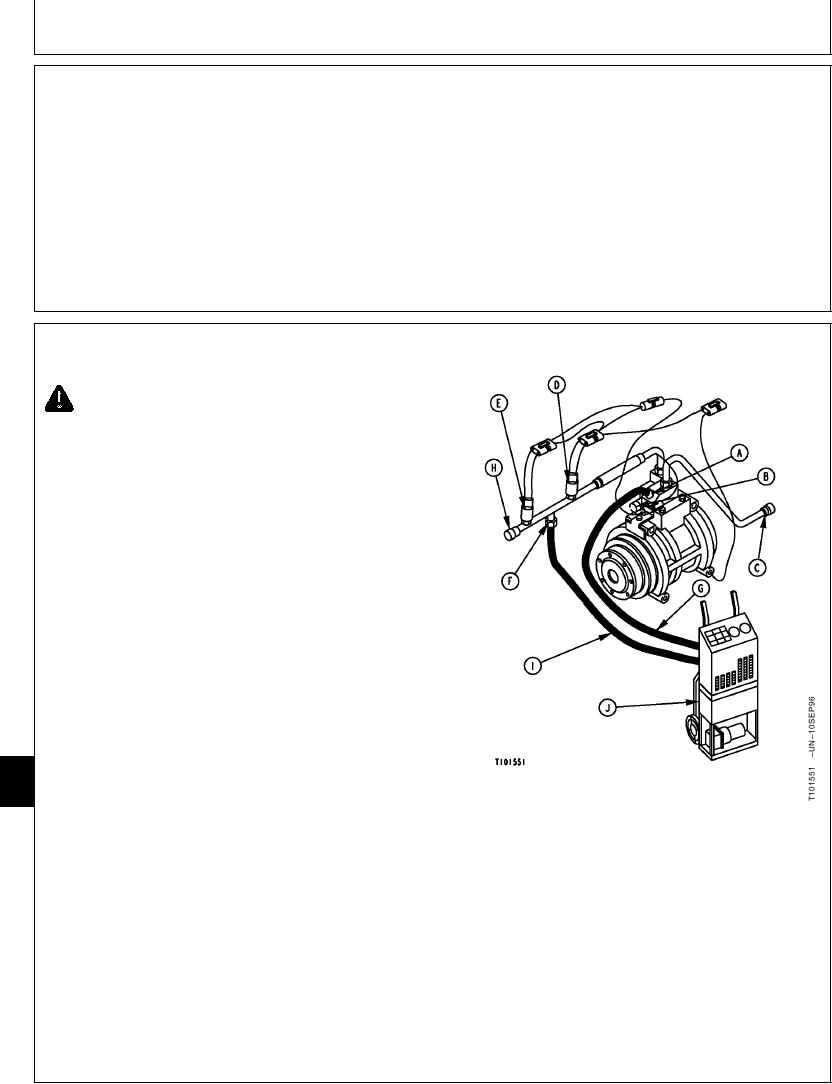
TM 5-3805-280-24-2
Heating and Air Conditioning
10. Continue to evacuate system for 30 minutes after 98
kPa (980 mbar) (29 in. Hg) vacuum is reached.
11. Close low-side and high-side valves. Stop evacuation.
12. Charge the system. (See procedure in this group.)
TX,18,UU3825
1921SEP982/2
CHARGE R134A SYSTEM
CAUTION: Do not remove high pressure relief
valve (B). Air conditioning system will
discharge rapidly causing possible injury.
IMPORTANT: Use correct refrigerant recovery,
recycling and charging stations. DO
NOT mix refrigerant, hoses, fittings,
components or refrigerant oils.
1. Connect refrigerant recovery, recycling and charging
station. (See Charging Station Installation Procedure in
this group.)
2. Evacuate the system. (See Evacuate Air Conditioning
System Procedure in this group.)
NOTE: Before beginning to charge air conditioning
system, the following conditions must exist:
Engine STOPPED, the pump must be capable of
pulling at least 28.6 in. Hg vacuum (sea level).
Subtract 3.4 kPa (34 mbar) (1 in. Hg) from 98 kPa
18
(980 mbar) (29 in. Hg) for each 300 m (1000 ft)
1830
elevation above sea level.
10
3. Follow the manufacturers instructions and charge the
A--Low Pressure Test Port
system.
B--High Pressure Relief Valve
C--Low Pressure Hose
D--Low Pressure Switch
4. Add refrigerant until system is charged with 2.43 kg
E--High Pressure Switch
(5.25 lb).
F--High Pressure Quick-Disconnect
G--Blue Hose
5. Do air conditioner checks and tests. (See procedures
H--High Pressure Hose
in Groups 9031-10 and 9031-25.)
I--Red Hose
J--Refrigerant Recovery/Recycling and Charging
Station
TX,18,UU3826
1921SEP981/1
18-30

